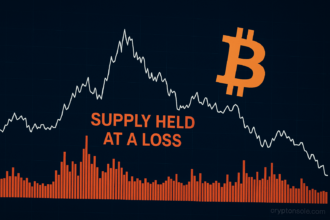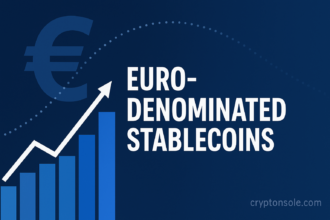Péter Szilágyi, a core developer on the Geth client and long-time contributor to the Ethereum ecosystem, has publicly revealed a private letter he sent to the Ethereum Foundation leadership in mid-2024. In the letter, he criticised the Foundation’s compensation structure, governance model and what he described as a powerful inner circle of “5–10 opinion leaders” and “1–3 venture capital firms” centred around Vitalik Buterin. He claimed this group wields disproportionate influence over projects and direction in the ecosystem.
What Szilágyi disclosed
In his public post on X (formerly Twitter), Szilágyi linked to the letter and commented:
“Since y’all spammed my timeline full of #Ethereum existential crises, here’s a letter I sent to EF leadership a year and a half ago.”
Key points in the letter and subsequent interviews include:
- He stated his total pre-tax compensation over six years at the Foundation was only US$ 625,000, during which time the market cap of ETH rose to roughly US$ 450 billion (or more, depending on the reference).
- He argued that low compensation pushed dedicated contributors to seek external funding or exit, damaging alignment of incentives and increasing risk of “protocol capture” by interest groups.
- He alleged that the Ethereum ecosystem effectively operates under a “small circle” model: “a small group of 5 to 10 opinion leaders and 1 to 3 venture capitalq firms control the most influential project investments and direction decisions.”
- He said the influence of Vitalik Buterin and the inner circle is “almost absolute” in terms of ecosystem direction, despite Ethereum’s decentralised ideal.
Why this matters
This revelation raises several important issues for the Ethereum ecosystem and the wider crypto-industry:
- Governance credibility: One of the selling points of blockchain platforms is decentralisation; claims that a small elite effectively controls project direction may undermine that narrative.
- Contributor incentives: If top technical contributors perceive the compensation structure as unfair, this may lead to talent churn, forks, or divergent initiatives, potentially increasing fragmentation risk.
- Ecosystem fairness and project access: The allegation that project success depends heavily on relationships with a core group may raise concerns about fairness, network effects, and barriers to entry for smaller teams or open-source innovations.
- Regulatory optics: Concentration of influence can attract regulatory scrutiny if key decisions or token allocations appear insider-driven or opaque — especially as DeFi and ecosystem tokens increasingly draw attention from financial regulators.
Ethereum Foundation response (or lack thereof)
As of publication, the Ethereum Foundation has not issued a comprehensive public response to Szilágyi’s disclosures. Some social-media commentary suggests calls for greater transparency around governance, salary disclosure, contributor frameworks and project investment decisions. It remains to be seen whether the Foundation will formally address the allegations or engage in policy reforms around governance and compensation.
Implications for developers, projects and users
- Developers may reassess whether working inside large foundations or under traditional grant/foundation models aligns with their professional goals and value creation expectations.
- Project teams seeking to build on Ethereum might consider governance dependencies or hidden network-effects tied to the “core circle” environment and evaluate diversification of ecosystems or alternative chains.
- Users and token-holders could interpret this as a signal to scrutinise project foundations, advisory networks and funding relationships with more detail — especially when project road-maps emphasise decentralisation.
- Ecosystem evolution may shift: these disclosures could fuel calls for alternative governance structures (foundation decentralisation, DAO models), or forks that emphasise truly open access and flatter contributor hierarchies.
What to watch next
- Whether the Ethereum Foundation publishes an audit or transparency report addressing salaries, contributor compensation, governance decision-making and investment allocation.
- If other prominent contributors come forward with similar critiques or join public discourse regarding ecosystem governance.
- Whether major ecosystem projects restructure governance, token-allocation, or investor relations in response to these concerns.
- How this might influence sector-wide governance discourse — whether other major protocols (Solana, Polkadot, etc.) face similar scrutiny or proactively pre-empt such concerns.
- Whether users and projects shift interest toward alternative ecosystems emphasising different governance frameworks or contributor incentives.
Bottom line
Péter Szilágyi’s letter to the Ethereum Foundation and his public disclosures mark a significant moment of introspection for the Ethereum ecosystem. The allegations of compensation misalignment, opaque governance and concentrated2 influence challenge core assumptions about decentralisation and fairness. While the long-term impact remains uncertain, the episode raises important questions about how large open-source protocol ecosystems maintain their ideals while scaling talent, investment and project growth.
5760LXOE












